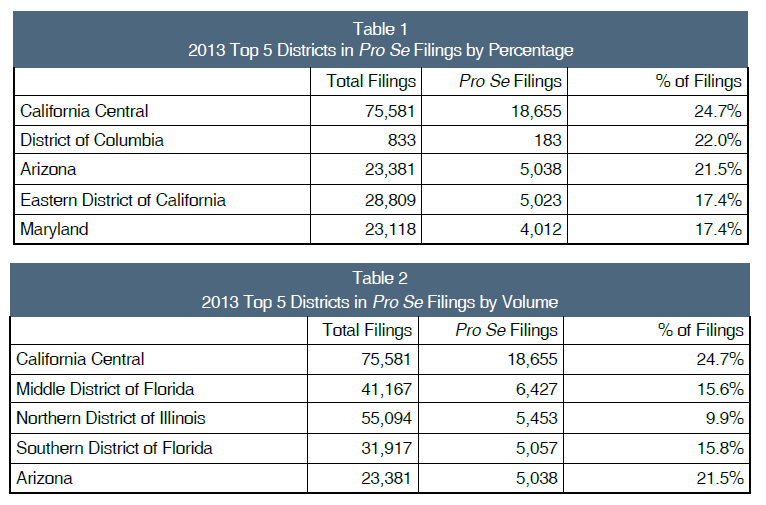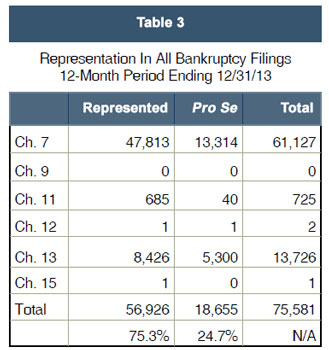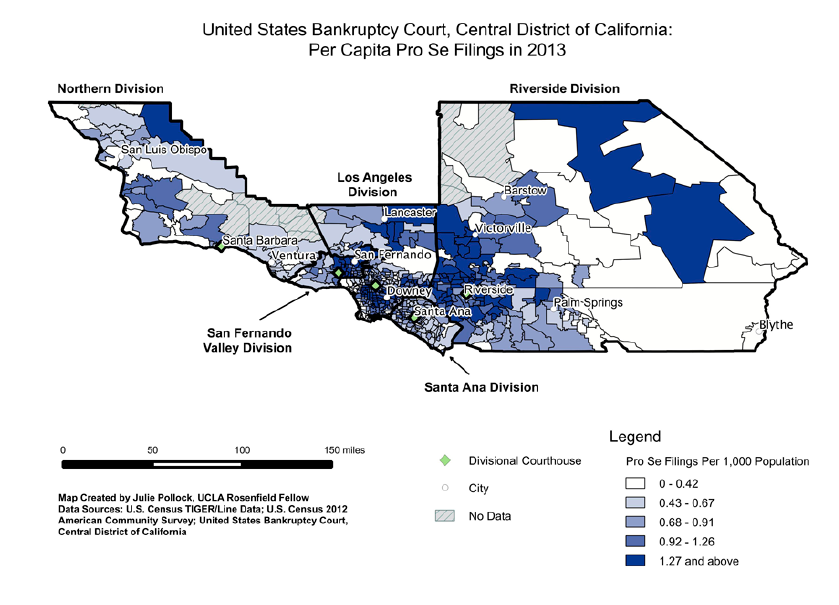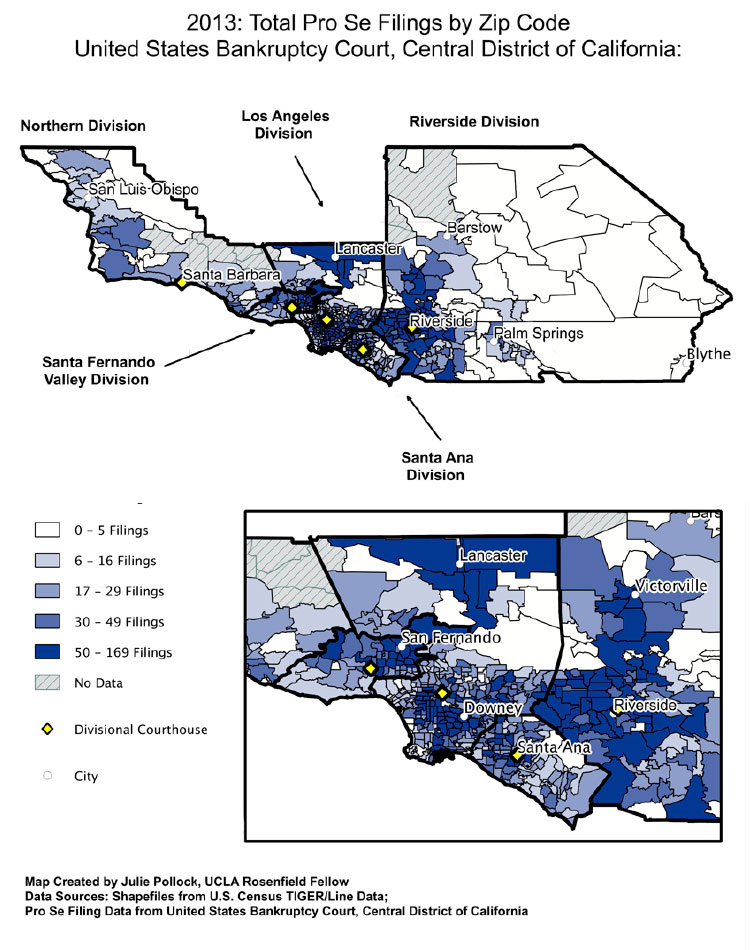Central District's Large Number of Self-Represented Parties
In 2013, even with a substantial decline in its overall number of filings, the Central District of California continued to lead the nation with over 75,000 filings. Nearly 25 percent of these filings were filed without an attorney, compared to only about 8.8 percent nationwide. In fact, the Central District of California received nearly 20 percent of the nationís pro se filings. California Centralís pro se filings compare with other high pro se districts as follows:

As 24.7 percent of the bankruptcy cases filed in the District were filed without counsel, fewer bankruptcy filings do not significantly impact the pro se share. The maps and charts in the following pages explore how the pro se cases are distributed geographically and among different chapters of the Bankruptcy Code. Attention to pro se needs remains essential to the Courtís goal of providing access and quality service to the public.



The previous two maps illustrate the distribution of pro se filings in the Central District in 2013. The first map displays Per Capita Pro Se filing rates (filings per 1,000 residents), showing high concentrations of pro se litigants in the following areas: Fontana, Rialto, Victorville and Moreno Valley (Riverside division), Koreatown, South Los Angeles, Carson, Downey, East Los Angeles, Lancaster, and Palmdale (Los Angeles division); Tarzana, San Fernando, Granada Hills, Sylmar and Pacoima (San Fernando Valley division); the City of Santa Ana (Santa Ana division); and Santa Barbara and Santa Maria (Northern division).
Each of the five divisions of the Court are situated in an area with a relatively high concentration of pro se litigants. This confirms that a self-help desk in each division is an effective method to reach many litigants. There are, however, also areas which are distant from the Court that have high concentrations of pro se filings (such as Lancaster, Palmdale, Sylmar, Victorville, and Santa Maria). Hopefully, the Courtís implementation of projects discussed later in this report such as live chat, as well as improvements to the Courtís ďDonít Have an AttorneyĒ webpage, may provide some assistance for debtors in remote locations.
It is important to note that the per capita pro se filing rates may be skewed in certain zip codes with extremely low populations (for example, there are zip codes in eastern San Bernardino County, as well as Northern San Luis Obispo County with populations of less than 100, where a single pro se petition results in a high filing rate.) The second map shows total pro se filings in each zip code for another perspective.


